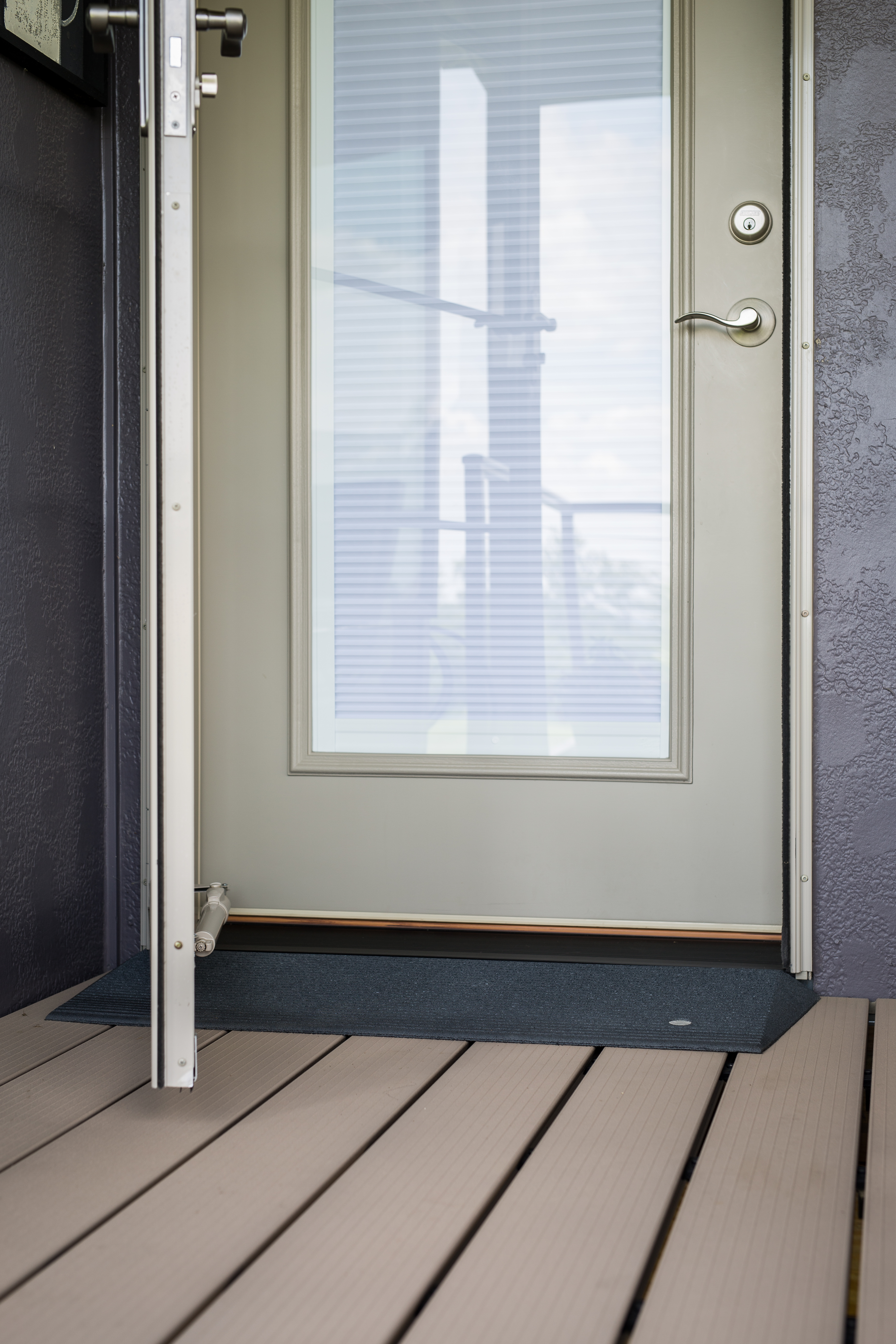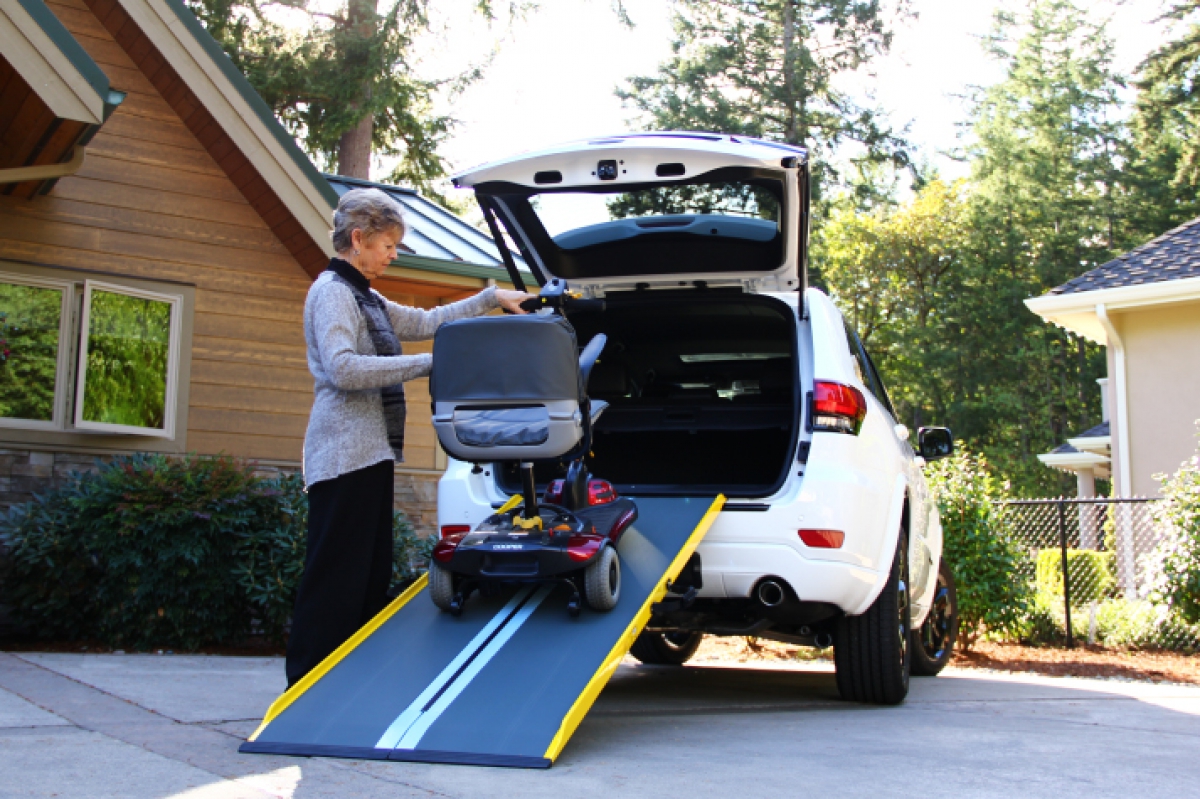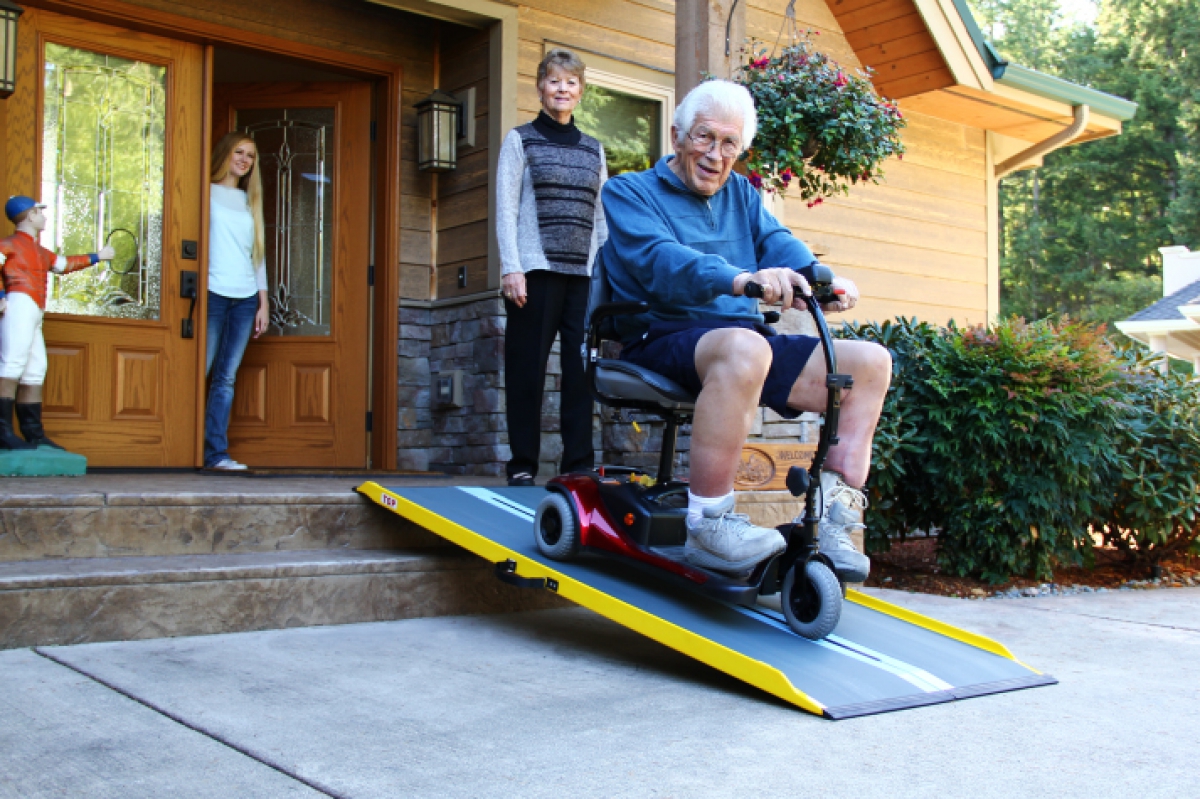How to Choose the Best Wheelchair Ramp
22nd Jul 2016
Ramps are created for several purposes, but how do you know which ramp would be best for your needs? You may need a handicap wheelchair ramp placed outdoors to help navigate the steps up to your front door. Perhaps you may need an aluminum loading ramp to assist transferring heavy items into your vehicle. Or maybe you need an entry ramp to help safely move through your home without tripping over a door threshold. This guide will walk you through determining which ramp is the right one for you by providing you with all of the things you need to consider before you make a purchase. Let’s get started.

1. What purpose do you need the ramp for? Identify the issue.
Before purchasing a ramp, you will need to identify what issue you are trying to solve. From indoor walking hazards such as door thresholds and raised landings, to outdoor mobility dangers such as vehicle rises and porch steps, there are many different safety risks that people face every day. A ramp provides a simple solution to each of these mobility issues.
Or there could be several problems. In the case that you need a portable ramp that you can move to different locations, you will need to decide if one ramp would accomplish the job or if two or more ramps are necessary. It is possible that the same portable ramp that helps you get up the steps to your home could also help you get into a vehicle.
With the help of those closest to you, assess your own situation. You know best what your physical limitations are as well as what risks you face as you move around your home. By identifying your issue(s), you will be able to determine what type of ramp would suit your needs.
2. What type of ramp would work best for me?
When analyzing what ramp would work best for you, there are many things to consider. Look at each of the following factors as you make your decision.
 Entry Ramp or Suitcase
Ramp?
Entry Ramp or Suitcase
Ramp?
Is there a door lip that is a safety hazard for you to step over? In this case, you will need a small compact entry ramp as opposed to a large, long folding suitcase ramp. Generally, an entry ramp can be used to accommodate heights less than six inches, such as doorway lips, landings and a single short stair. These ramps are available in lengths up to 3 feet. Any higher of a vertical rise, and a suitcase ramp will be required to fulfill your needs. A suitcase ramp can extend up to 10 feet and will work well with two to four stairs to provide a gentle incline for the user.
Permanent Ramp or Portable Ramp?
How permanent would you like your ramp to be? If you are looking for a large, winding wooden or metal modular ramp for a vertical rise of over 30 inches, then this would be considered a permanent structure with a contractor involved. If you are looking for a temporary ramp that can be taken with you to another location or moved to another place in your home, a portable ramp will be right for you. While permanent ramps require a costly home renovation, portable ramps are less expensive, easy to install by yourself, and do not cause any damage to your home. These temporary ramps are just as secure as a modular ramp yet can be moved or removed at any time. Many of these ramps feature a heavy duty handle or carry bag to help transfer the ramp from one location to another.
3. What size ramp do I need?
- Wheelchair Ramp Specifications
What are the wheelchair ramp specifications that you need? Get out your tape measure- for safety reasons, accurate measurements are important to determine the correct dimensions for the ramp. First measure the width of the threshold, landing, vehicle rise or step. Next, measure the vertical rise. The vertical rise is the overall height measured from the ground up to the highest point where the ramp will rest. In addition, you will need to find out the proper wheelchair ramp angle (also known as slope or incline), for your mobility aid. This can typically be found in the equipment’s owner manual. See ADA Wheelchair Ramp Requirements below for more information regarding the wheelchair ramp angle.
While it is easy to measure the width of a doorway or height of a step, figuring out the length for your ramp is the most difficult part of buying a ramp. To determine the length for your ramp, refer to our guide for ramp calculation.
Also, make sure you have enough clearance in your home, on your porch, etc. to accommodate the length of the ramp. If the ramp is too long, it may further hinder your ability to move in other areas of your home, causing another safety hazard. If you are buying a four foot ramp, make sure you have at least three feet of clearance, but preferably more!
- Weight Capacity
What will you be transporting? Think about the maximum amount of weight that you will need the ramp to support. If you are using the ramp to move an object in and out of your vehicle, determine the weight of just that object(s). However, if you have a raised landing that is a few inches too high for you to step onto and you use a mobility aid (wheelchair, rollator, walker, etc.), you will need to consider your weight plus the weight of your mobility aid. In the case that you are typically pushed in your wheelchair by a caregiver, you would calculate the weight capacity by adding up the weights of you, your caregiver and your wheelchair. While most ramps feature a weight capacity of several hundred pounds, it is better to be safe than sorry and consider the occupancy of the ramp you require before purchase.
- ADA Wheelchair Ramp Requirements
In order to ensure that ramps are being used safely at home, the American with Disabilities Act (ADA) provides recommendations for portable mobility ramps in residential areas. These ramps can accommodate walkers, scooters, manual wheelchairs and power wheelchairs.
To determine the wheelchair ramp angle, the ADA provides two slope standards of loading occupancy for you to follow: Occupied and Unoccupied. The Occupied standard applies to a person who sits on the scooter or wheelchair as it is pushed up or down the ramp. The Unoccupied standard means that no one is sitting in the scooter or wheelchair as it is pushed up or down the ramp. We recommend that you assess your own use for the ramp and follow the ADA standards below:

Unoccupied Ramp Standards: The ADA recommends a slope of 3.12. This requires that for every 3” of vertical rise, there is at minimum 1' of ramp length. For example, a 6” rise would need a ramp length of at least 2'. (6 divided by 3)

Occupied Ramp Standards: The ADA recommends a slope of 2.12. This requires that for every 2” of vertical rise, there is at minimum 1' of ramp length. For example, a 12” rise would need a ramp length of at least 6'. (12 divided by 2).
Most importantly, keep in mind that the higher the vertical rise, the longer the wheelchair ramp will be necessary to provide a gentle, safe slope. Choose a ramp with the least amount of slope to keep yourself or your loved one safe. If you withhold on length to save money, you may pay for it later!
4. Are there any special features that the ramp needs to have?
Perhaps you will be purchasing a suitcase ramp for use with your van. You are concerned that the van’s rear bumper prevents the lip of the ramp from laying down flat. A top lip extension will add an extra 6 inches onto the ramp lip, clearing the rear bumper, allowing a smooth transition and preventing any damage to your vehicle. Maybe you are concerned that an entry ramp used indoors will not blend in with your home décor. The Rubber Threshold Angled Entry Ramp is available in three colors, black, gray and brown, to match the colors already displayed in your home. Concerns like these should be addressed before purchase so there are no surprises when you receive the ramp.
After considering the purpose, type, size and special features of the ramp, you will be able to identify the best ramp to suit your needs. Find the ramp you need here.

